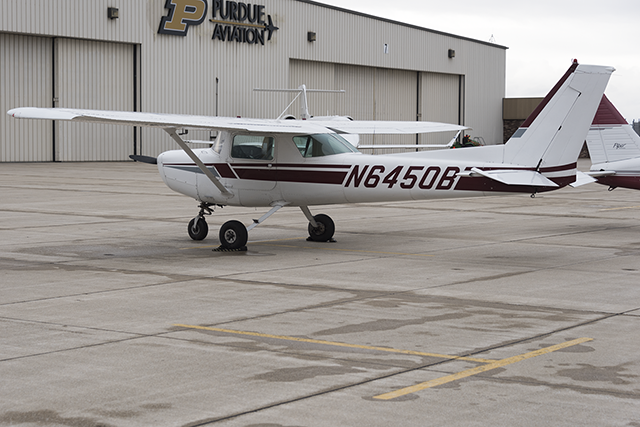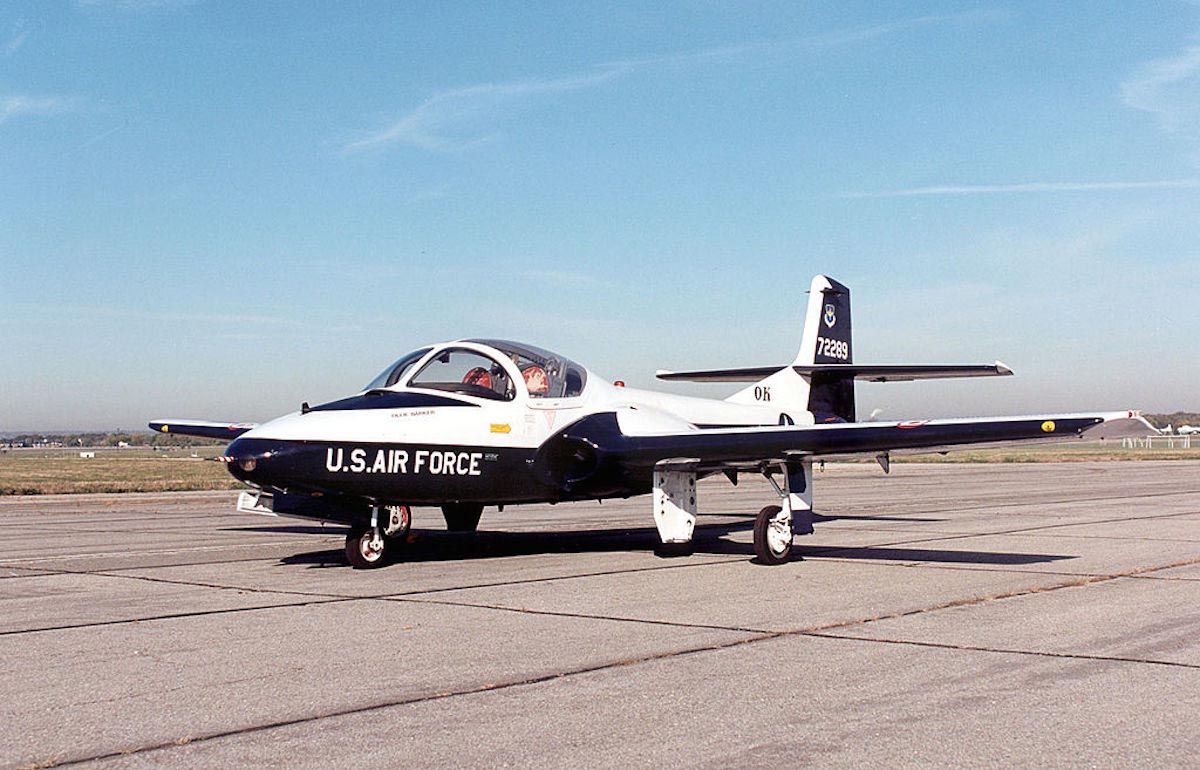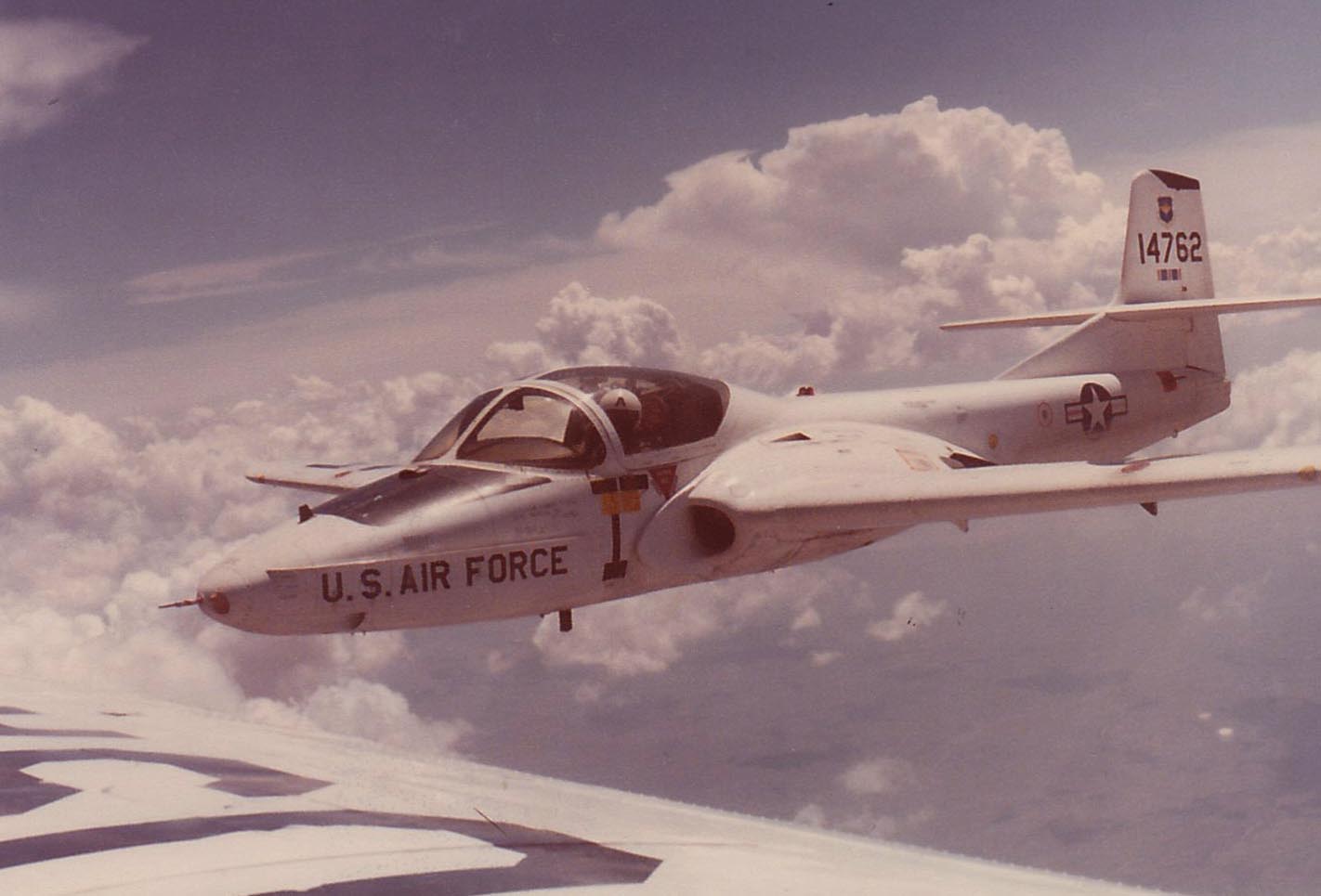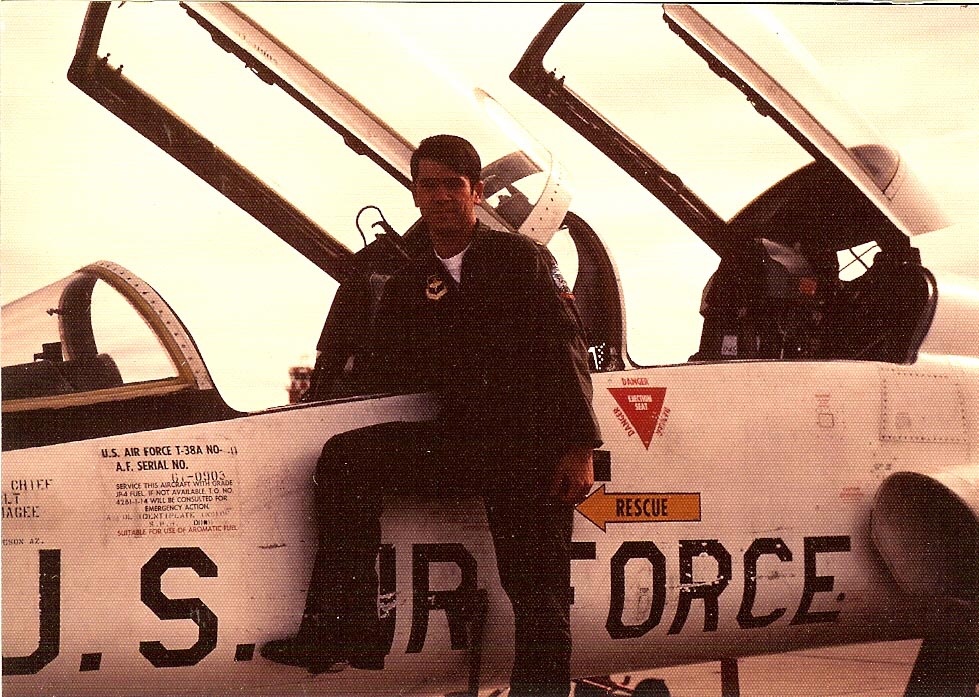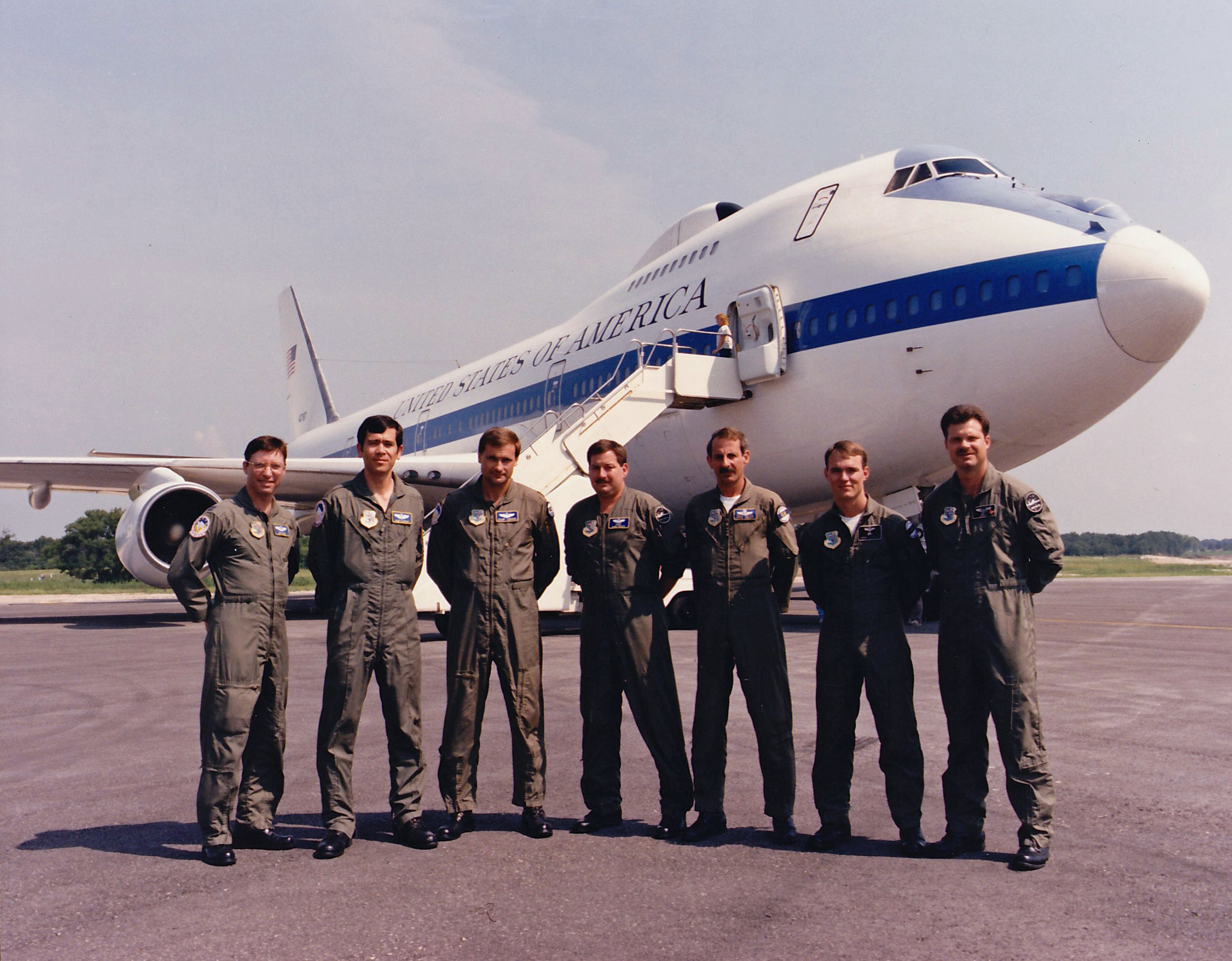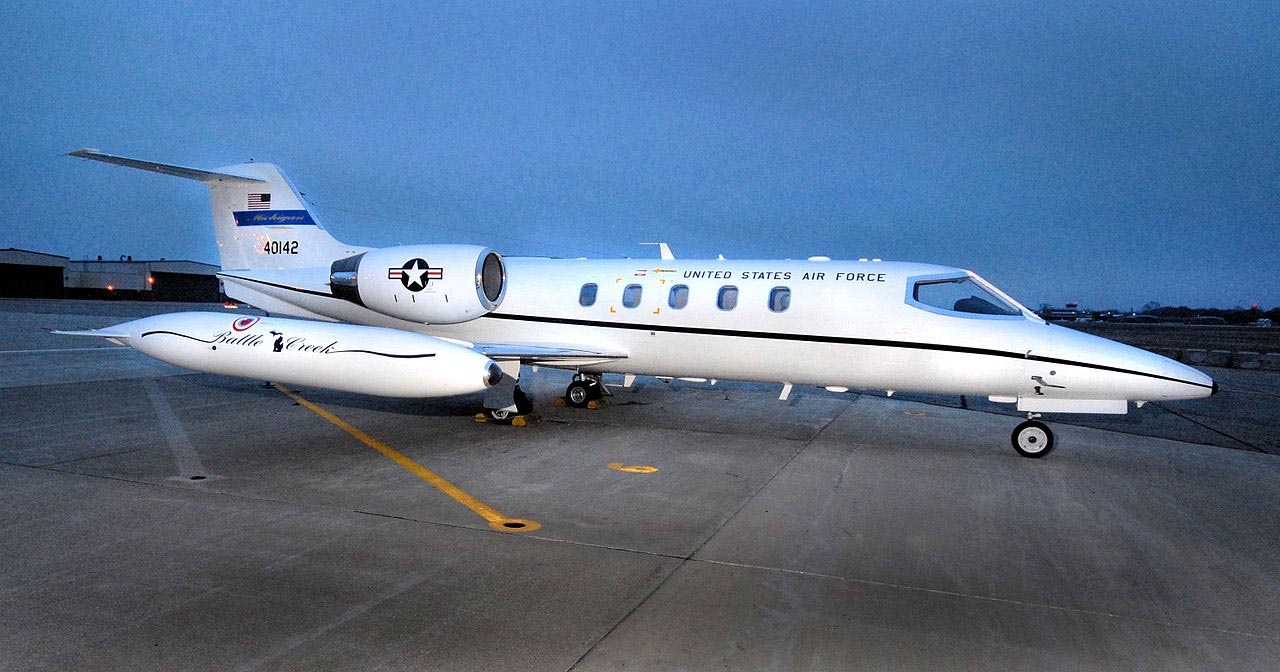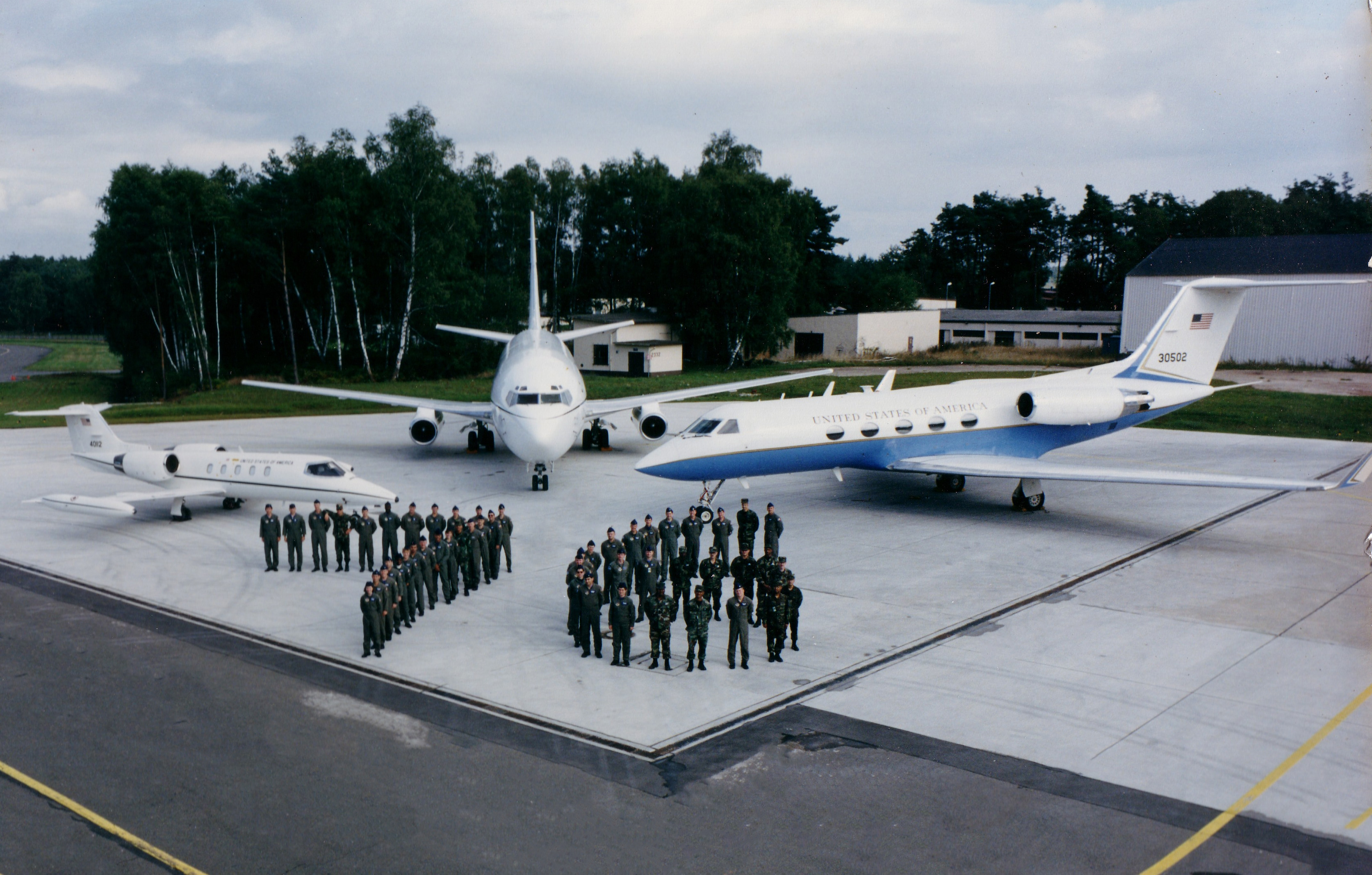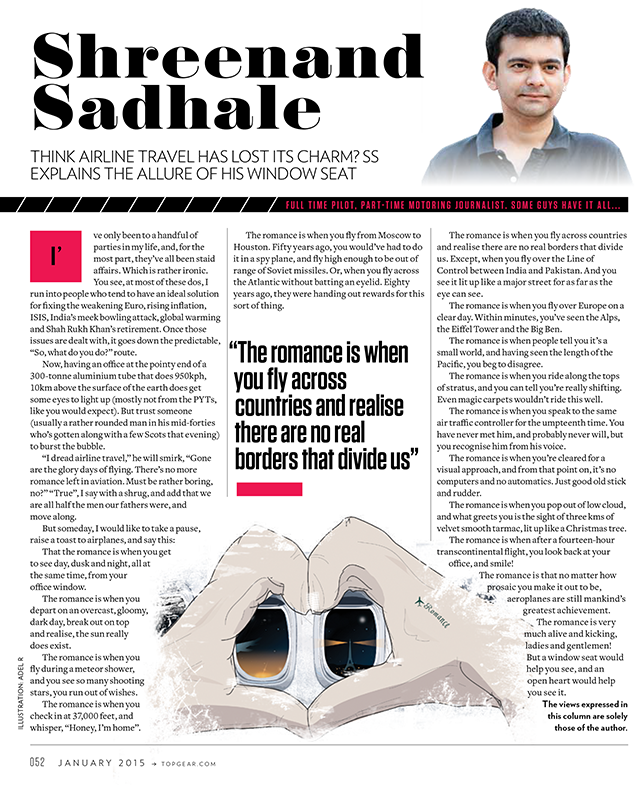"The Rules" are twenty-six ideas I've collected over the years that seemed relevant enough to life in general that I've written each down with a short story to reinforce each in particular. This is Rule Number Eight.
— James Albright

Updated:
2025-10-20
Part of a young pilot’s ritual is to thrive on learning a new skill while wistfully wishing the arrows to come were already part of one’s quiver. When you are still on the first page of your logbook it is easy to keep a positive attitude because everything is new to you and the knowledge that you have conquered gravity goes far to motivate you for more. But after a while it is easy to get bogged down by your lack of progress, someone else's seemingly effortless progress, or just the fact that things never seem to improve. We rarely pause to take a breath and realize just how lucky we are to be doing what it is we are doing to make a living.
"Happiness is an insider job. it is something you create, not something you receive."
— Jordan Peterson

The happiness formula
Before we get to our story, here is a little wisdom. All of this comes from The Happiness Hypothesis, a wonderful book by Jonathan Haidt. I've found over the years that there is no correlation between wealth, intelligence, social circumstance and happiness. I've never been the richest, smartest, or most popular person in my orbit. But I could very well be the happiest. (And if that isn't true, I'm okay with that too.) So what gives? Haidt's book sheds more than a few clues, but the best are about a third of the way through the book.
In the 1990s, the two big findings of happiness research (strong relation to genes, weak relation to environment) hit the psychological community hard, because they applied not just to happiness but to most aspects of personality. Psychologists since Freud had shared a nearly religious devotion to the idea that personality is shaped primarily by childhood environment. This axiom was taken on faith: The evidence for it consisted almost entirely of correlations-usually small ones-between what parents did and how their children turned out, and anyone who suggested that these correlations were caused by genes was dismissed as a reductionist. But as twin studies revealed the awesome reach of genes and the relative unimportance of the family environment that siblings share, the ancient happiness hypothesis grew ever more plausible. Maybe there really is a set point fixed into every brain, like a thermostat set forever to 58 degrees Fahrenheit (for depressives) or 75 degrees (for happy people)? Maybe the only way to find happiness therefore is to change one's own internal setting (for example, through meditation, Prozac, or cognitive therapy) instead of changing one's environment?
As psychologists wrestled with these ideas, however, and as biologists worked out the first sketch of the human genome, a more sophisticated understanding of nature and nurture began to emerge. Yes, genes explain far more about us than anyone had realized, but the genes themselves often turn out to be sensitive to environmental conditions. And yes, each person has a characteristic level of happiness, but it now looks as though it's not so much a set point as a potential range or probability distribution. Whether you operate on the high or the low side of your potential range is determined by many factors that Buddha and Epictetus would have considered externals.
When Martin Seligman founded positive psychology in the late 1990s, one of his first moves was to bring together small groups of experts to tackle specific problems. One group was created to study the externals that matter for happiness. Three psychologists, Sonja Lyubomirsky, Ken Sheldon, and David Schkade, reviewed the available evidence and realized that there are two fundamentally different kinds of externals: the conditions of our life and the voluntary activities that you undertake. Conditions include facts about your life that you can't change (race, sex, age, disability) as well as things that you can (wealth, marital status, where you live). Conditions are constant over time, at least during a period in your life, and so they are the sorts of things that you are likely to adapt to. Voluntary activities, on the other hand, are the things that you choose to do, such as meditation, exercise, learning a new skill, or taking a vacation: Because such activities must be chosen, and because most of them take effort and attention, they can't just disappear from your awareness the way conditions can. Voluntary activities, therefore, offer much greater promise for increasing happiness while avoiding adaptation effects.
One of the most important ideas in positive psychology is what Lyubomirsky, Sheldon, Schkade, and Seligman call the "happiness formula:"
H = S + C + V
The level of happiness that you actually experience (H) is determined by our biological set point (S) plus the conditions of your life (C) plus the voluntary activities (V) you do. The challenge for positive psychology is to use the scientific method to find out exactly what kinds of C and V can push H up to the top of your potential range. The extreme biological version of the happiness hypothesis says that H = S, and that C and V don't matter. But we have to give Buddha and Epictetus credit for V because Buddha prescribed the "eightfold noble path" (including meditation and mindfulness), and Epictetus urged methods of thought to cultivate indifference (apatheia) to externals. So to test the wisdom of the sages properly we must examine this hypothesis: H = S + V, where V = voluntary or intentional activities that cultivate acceptance and weaken emotional attachments. If there are many conditions (C) that matter, and if there are a variety of voluntary activities beyond those aimed at nonattachment, then the happiness hypothesis of Buddha and Epictetus is wrong and people would be poorly advised simply to look within.
It turns out that there really are some external conditions (C) that matter. There are some changes you can make in your life that are not fully subject to the adaptation principle, and that might make you lastingly happier. It may be worth striving to achieve them.
Source: The Happiness Hypothesis, pp. 90-92
Happiness takes effort
That thirst for knowledge, happiness when the thirst is temporarily quenched, and newfound hunger for more is a cycle that repeats itself many times for most pilots. But for many it comes to a screeching halt when the aspiring pilot realizes that the next steps will come at too great a price or may not be obtainable at all. For some, perhaps most, the process happens rather quickly. At some point you just run out of money and realize you will never be a professional pilot. For others, it happens late in their flying careers, perhaps even in the left seat of an airline cockpit or the only seat of an Air Force fighter. Wherever it happens, the net effect can be misery. These are some unhappy pilots who need to learn . . .
On January 2nd, 1979, I was sitting in class with 38 other student pilots. All but 3 of us were second lieutenants still getting used to being in uniform and wearing the gold bar of an officer’s rank. In the front of the class was an Air Force captain wearing the wings of an Air Force pilot, something 22 of us would eventually earn in 11 short months. He was the most magnificent human being on the planet.
Captain Harold Kingston stood about ten feet tall and appeared to have been cut out from an Air Force recruiting poster. His clear eyes conveyed the sense of confidence one only gets from taming the fire and steel of a supersonic jet and the ability to bend nature itself to one’s will. “Military aviation,” he said, “is ten percent hands and ten percent brains, and ninety percent attitude.” Even arithmetic had to bend to his wishes.
Starting with sortie one we learned that we had much to learn. Our instructors could fly each required maneuver with an effortless ease that made our first attempts seem infantile by comparison. A loop in an aerobatic jet, even a Cessna T-37 “Tweet,” is a thing of beauty. The build up of g-forces starts off gradually and the speed bleeds predictably and in a controlled and expected manner. At the top of the loop the aircraft is still flying, though inverted, and the positive-g is at its lowest, but still positive. Then as the loop progresses the speed builds, the g-forces build and it all seems predictable. And beautiful. Our first loops were anything but. My first loop ended in a spin.
“Recover.”
But even with these setbacks it was all fun and encouraging. Someday we would have these skills.
Air Force Undergraduate Pilot Training takes 11 months from start to finish. About five of those are taken by the T-37 and by the time you are done you have about 80 hours in the jet and have mastered all they can teach. You know the secrets of formation flying, you can fly instruments down to minimums, and aerobatics are a natural part of your muscle memory. The next airplane in your future is the supersonic T-38 “Talon,” but for a brief moment in time, you are a master of your craft. My last sortie in the T-37 was with Captain Harold Kingston.
Captain Kingston spent most of his time teaching academics and his hands were a bit rusty.
“Mind if I steal a few landings?” he asked as we hit the pattern.
“Not at all, sir.” The overhead traffic pattern is a uniquely military event, designed to cram as many airplanes into as little airspace as possible. We flew right on top of the runway, a thousand feet up, as fast as our little jet could fly. At the end of the runway we rolled into 60 degrees of bank, pulled 2-G’s, and entered our downwind legs just a half-mile displaced. When it was time to turn base, we rolled into 45 degrees of bank and let the airplane fall out of the sky. Ten of our class washed out because they could never figure it out.
Captain Kingston had it figured out, but just barely. “A little rusty,” he said as he overshot final. “Could be better,” he said as the airplane plopped onto the runway, a bit too far down the runway. He wasn’t the aerial Adonis after all.
In 1979 the Air Force aerial demonstration team, the Thunderbirds, flew the T-38. And so did I. The learning curve was steep, no doubt about it. But it wasn’t the same ordeal as the T-37. We had it figured out. Even our relationships with the infallible instructors had changed. We recognized they were human and they recognized that we would soon be just like them: Air Force pilots. And that’s when I first noticed it. Many of them were miserable.
The miserable ones envied those ahead of them. Most of them coveted their peers flying the brand new F-15 Eagle. Some envied those flying the C-141, on the fast track to the airlines. Many envied any other pilot doing something operational. Unhappy pilots.
A few, however, seem to relish the moment. “I am getting pretty comfortable as an instructor,” they would say. “Only a year ago I was in your shoes. It happens fast.”
Ten years later I was an Air Force instructor pilot flying what many would argue was the best airplane ever made: a Boeing 747. At the time there were only fourteen of us on active duty and wherever we showed up the envy in the air was palpable. How could such mortal men be entrusted to fly such an expensive work of art? If such a thing existed, you could argue we were at the top of the heavy airplane pilot pyramid. And yet fully half our ranks were miserable.
“What’s a guy got to do to get promoted around here?” “It’s just another airplane.” “I would trade her in for an airline job anywhere.” Or, at the very least, “Yeah it’s a great airplane and a great job, but it isn’t going to last.”
Most of our pilots were majors vying for lieutenant colonel and it wasn’t going well. As a captain vying for major my promotion was almost guaranteed, but it was easy to fall into the same gloomy outlook. Even with the best jobs thrown my way, flying a marvelous airplane, it was tempting to fall into the same pessimistic funk.
In 1989 my official duty title was “E-4B Functional Check Pilot,” the squadron’s most desirable and fought after job. Not that it was anything really special. Most Air Force aircraft have a dedicated team of functional check pilots, specially trained to test aircraft after heavy maintenance or modifications. In an Air Force of over 2,000 F-16s, for example, you can expect to have 5,000 F-16 pilots of which it would be easy to pick 10 or 20 from the ranks of instructors to fulfill the role. What about our E-4B Boeing 747s? We had 14 pilots and one functional check pilot. And in 1989 that pilot was me. I found myself at a technical conference where I was asked to speak and the emcee introduced me as the Air Force’s one and only Boeing 747 test pilot. Of course I set the record straight.
After the event a civilian aeronautical engineer cornered me. “Wow,” he said, “you look pretty young to be the top Air Force pilot.”
“I’m certainly not the top Air Force pilot,” I said.
“Well, a Boeing 747 test pilot! That’s pretty special.”
“I’m not a test pilot,” I said, “there is a school for that and I haven’t been.”
“Well, a Boeing 747 instructor pilot!”
I didn’t have a comeback for that one.
“The Boeing 747!” he gushed. “That has to be the top airplane in all the world. I bet every pilot wishes he was flying a Boeing 747!”
“She’s a wonderful bird,” I agreed. “But what about the Concord? There are fewer of them and how many civilian pilots get to say they fly supersonic for a living?”
“Oh,” he said. “Yeah, I guess that’s true. But other than the Concord, the 747 is tops!”
“What about the space shuttle?” I asked. “There can’t be a lot of them around.”
“Oh, yeah,” he said. “I supposed. But other than the Concord and the space shuttle, every pilot wants to fly the Boeing 747!”
“I guess,” I said. “But I guarantee you every time a space shuttle pilot sees a Stearman or Pitts, he is thinking, ‘that sure would be fun to fly.’”
I walked away from that conversation thinking I had done a good job being humble but not obnoxious, and that I managed to make a pithy observation about life in general for us pilots. But the more I thought about it, the more I realized I had succumbed to the pessimism so prevalent in our 747 squadron. There we were not only flying the one of the world’s best aircraft, but we were doing things with it no civilian pilot even dreamed of. We routinely flew in formation while air refueling, we were allowed to fly touch and go landings that no civilian operator dared attempt, and we had a mission that kept us active worldwide. Why were we so miserable?
The next morning we sat through several speeches given by other program managers, each responsible for many of the smaller Air Force aircraft. The lead off speaker was an Air Force major who filled the role of the Air Force’s C-21 functional check pilot. The C-21 is the Air Force model of the Lear 35, a very small and slow business jet. But the Lear epitomizes “business jet” in the public mind and every C-21 pilot I had ever met walked with a special swagger. I had never considered the airplane anything more than an entry-level airplane, if I ever considered it at all.
“And now we get to the sexiest airplane in the entire United States Air Force,” he began his talk, as the video behind him showed a C-21 taking off into a California sunrise. “No airplane does more as reliably and cost efficiently. No airplane!”
Where my speech was all business, short and to the point, the C-21 Functional Check Pilot’s talk was full of pizzazz and enthusiasm. When he got done the applause was thunderous and for the first time ever, I wondered what it would be like to fly a Learjet.
I met the pilot for lunch and learned he was doomed for promotion pass over, but he was resigned to that fact. “I know you need to fly a major weapon system in this man’s Air Force to get promoted, you have to have had all the right jobs and a staff tour or two doesn’t hurt. I got none of that. So I suspect I’ll be looking for a civilian job in a year or so, but what better way to do that than say you were the Air Force’s top Learjet test pilot?”
I let his braggadocio slide – the Air Force doesn’t have Learjet test pilots – but was impressed with his attitude. “You are pretty upbeat,” I said. “How can we instill your attitude into others?” (Like me, I thought but did not say.)
“Anybody can be unhappy,” he said. “I think that might be the natural human condition. You just wake up and decide life sucks and no further effort is required. Happiness takes effort, you need to work at it.”
I grabbed the nearest piece of paper, knowing my list of rules to live by had just increased by one. “How do you work at it when the rest of your peers are passing you by? The Air Force officer corps is built on ‘up or out’ so when you inevitably don’t get promoted they kick you in the butt and your peers wave as you walk out the door.”
“So who says you have to compare their success with your failures?” he asked. “I think you should compare yourself to your previous self.” I scribbled some more. “A year ago I was a C-21 instructor pilot thinking I had the airplane mastered when this job fell in my lap and I realized I only knew a fraction of what I needed to know. Five years before that I was a T-37 instructor pilot who thought he had the flying game wired. A few year before that I was a T-37 student pilot wondering if I was ever going to get my wings. I may not make lieutenant colonel, but I’ve come pretty far. Don’t you think?”
“Yes,” I had to agree. “You’ve done pretty well.”
Several years later I found myself flying a desk at the Pentagon, newly promoted to lieutenant colonel. The five-sided-puzzle palace may be the epicenter of military doom and gloom, an easy place to retreat into a shawl of pessimism. But I was pretty happy. As a budget programmer I was using my masters degree in economics while still talking aviation. The top officers, I knew, would be rewarded with command jobs and a small fraction of those would get command jobs of flying units. But even if I spent the rest of my career at the Pentagon, I was a lieutenant colonel serving my country. Albeit with a pen, pencil, and a few Power Point slides.
A year later I was selected to command a flying squadron of Gulfstreams, Learjets, and a Boeing. It was time to edit Rule Number Eight.
“Happiness takes effort, but is rewarded.”
References
(Source material)
Haidt, Jonathan, The Happiness Hypothesis, Basic Books, New York, 2006.
